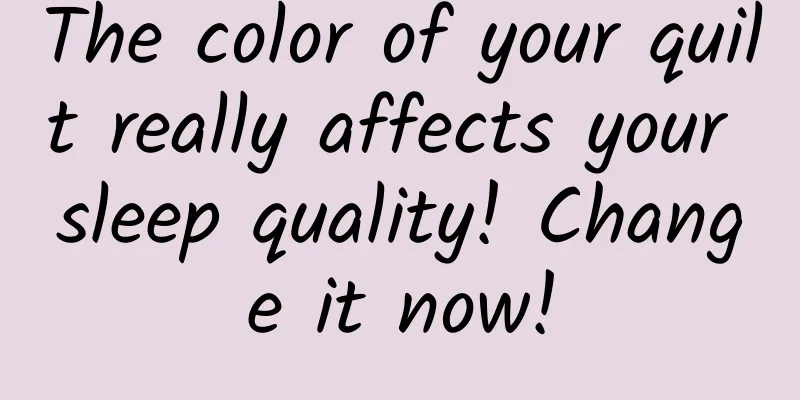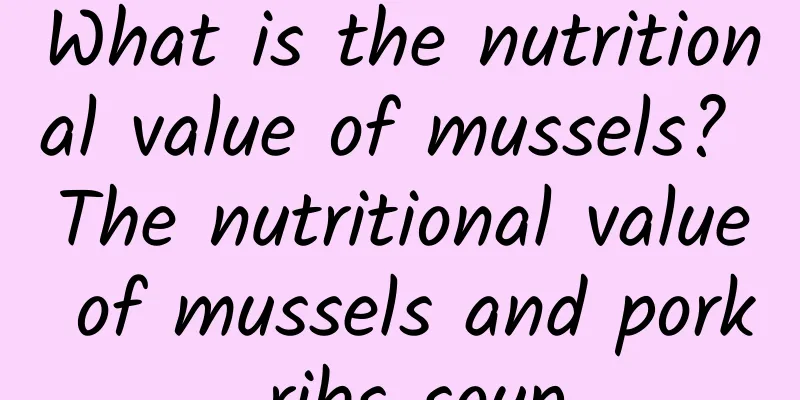The clever use of "dead points" to treat various diseases is amazing!

|
There are 108 vital points in the human body, 72 of which are not fatal if hit, and the remaining 36 are fatal points, commonly known as "death points". "Death points" mean points that can endanger one's life if not treated in time after being hit or struck. In fact, death points are some special points in the human body. Because of the anatomical characteristics and special functions of the death points in the human body, some points have large arteries passing through them, some points have nerve tissues under them, and some points are close to internal organs. These factors will make these points more dangerous or even fatal when they are subjected to sudden and strong external forces. However, health care physiotherapy is gentle, and masseurs often massage them, and the auxiliary treatment effect is very good. The death points are divided into four categories: soft and numb, dizzy, light and heavy. Each type has nine points. Together, there are 36 fatal points. 1. Key points of the head and neck (9 in total) 1. Baihui Point Baihui acupoint is located at the intersection of the midline of the top of the head and the line connecting the two ear tips. It is located on the top of the head and connected to the brain. It can be seen that Baihui acupoint is closely connected to the brain and is an important acupoint for regulating brain function. It is the meeting point of all meridians and runs through the whole body. The head is the meeting point of all yang and the center of all meridians, and Baihui acupoint is the place where the qi of all meridians converge. The acupoint is yang in nature, and it contains yin in yang, so it can reach the yin and yang meridians and connect the meridians throughout the body. It plays an important role in regulating the yin and yang balance of the body. Indications: headache, dizziness, shock, high blood pressure, rectal prolapse, etc. Note: If this point is hit, the person will faint and lose consciousness. 2. God's Court Shenting, a meridian point name. From the "Acupuncture and Moxibustion Classic". Another name is hairline. It belongs to the Du channel. On the head, 0.5 inches above the middle of the current hairline. At the junction of the left and right frontal muscles; there are branches of the frontal artery and vein; there are branches of the frontal nerve. It is mainly used to treat headache, dizziness, red and swollen eyes, tearing, eye opacity, nystagmus, sinusitis, epistaxis, mania, epilepsy, opisthotonos. Needle flat 0.3-0.5 inches; can be moxibustioned. Note: Hitting this point may cause dizziness and brain swelling. 3. Temple The temple is a special point, located in the temporal region, between the tip of the eyebrow and the outer canthus of the eye, and the depression about one horizontal finger backward is the temple. When massaging, first adjust your body posture, you can sit or stand, but you must be upright, with a straight back, chest and abdomen, emotional stability, and mental concentration. Generally, you should sit. After sitting or standing, rub your palms to warm them up, apply them to your temples, apply a little force, and rub them clockwise for 10-20 times, and then counterclockwise for the same number of times. You can also put your palms on your head, press the tip of your thumb on the temples on both sides, apply a little force to make the temples feel slightly painful, and then rotate them clockwise and counterclockwise for the same number of times. Generally, the number of massages can be more or less, and you can adjust it according to the degree of brain fatigue. When locating this point, the patient is usually asked to sit upright or lie on his back, so that the practitioner can accurately locate the point and smoothly implement the corresponding massage technique. The temple is located on the side of the head, one finger back from the middle of the eyebrow tip and the outer corner of the eye. The main symptoms of the temple are headaches, migraines, eye fatigue, toothache and other diseases. Note: Pressing this point may cause dizziness, dark vision and tinnitus. 4. Ear Gate Point The ear gate is from the Acupuncture and Moxibustion Classic. It belongs to the Shaoyang Triple Burner Meridian of the Hand. It is located on the face, in front of the notch above the tragus, at the posterior edge of the mandibular condyle, and there is a depression when the mouth is opened. It is covered with the auriculotemporal nerve, branches of the facial nerve, and the superficial temporal artery and vein. It is mainly used to treat tinnitus, deafness, ear pain, toothache, jaw swelling, vertigo, etc. Open the mouth and pierce 0.5-1 inch straightly. Note: After this point is pressed, the patient will experience tinnitus, dizziness and fall to the ground. 6. Ren Zhong Point Ren Zhong acupoint is located at the midpoint of the nasolabial groove of the human body. It is an important acupoint for emergency treatment. It is located at the junction of the upper third and the lower two-thirds of the upper lip groove. It is an important acupoint for emergency treatment of fainting. It is mainly used to treat epilepsy, coma due to stroke, convulsions in children, facial swelling, and back pain. Note: Pressing this point may cause dizziness and blurred vision. 7. Yamen acupoint This point belongs to the Governor Vessel and is the meeting point of the Governor Vessel and the Yangwei Vessel. It is located on the posterior midline of the top of the head, in the depression between the first and second cervical spinous processes (the depression at the posterior hairline). Mute means that one cannot make a sound, which means that the Yang Qi begins to decline here. Gate means the door for entry and exit. The name of this point means that the Governor Yang Qi dissipates heat and contracts here. The substance of this point is the Yang hot Qi transmitted from the Dazhui point. After reaching this point, it is contracted due to its heat dissipation. If the heat dissipation and contraction of the Yang Qi is too much, it will make people unable to make a sound, hence the name. The name of the gate of mute means the same as the gate of mute, and mute means aphasia. Note: When this point is pressed, it will impact the medulla oblongata center, causing loss of voice, dizziness, and falling unconscious. 8. Fengchi Point Fengchi acupoint is an acupuncture point on the human body, also known as Refu acupoint. It is located on both sides of the big tendon behind the forehead and parallel to the earlobes. It belongs to the foot Shaoyang gallbladder meridian. The meaning of this acupoint is that the qi and blood of the gallbladder meridian absorb heat here and turn into yang heat wind. It is mainly used to treat headache, dizziness, stiff neck pain, red and painful eyes, tearing eyes, sinusitis, rhinitis, nosebleed, deafness, qi stagnation, stroke, hypertension, mental illness, facial paralysis, malaria, fever, cold, goiter, stiff neck, and urticaria. Note: When this point is hit, it will impact the medulla oblongata center and cause unconsciousness. 9. Renying Point The Renying point of the human body is located on the neck, next to the Adam's apple, at the front edge of the sternocleidomastoid muscle, where the common carotid artery pulsates. When taking this acupuncture point, the patient should adopt a sitting or reclining posture. The Renying point is located on the neck, about three centimeters outside the Adam's apple in the front neck. Anatomically, there is a platysma muscle, at the contact point between the front edge of the sternocleidomastoid muscle and the thyroid cartilage; there is a superior thyroid artery; at the bifurcation of the internal and external carotid arteries, there is anterior superficial jugular vein, and the outside is the internal jugular vein; there are cervical cutaneous nerves, cervical branches of facial nerves, deep carotid bulbs, the deepest layer is the sympathetic nerve trunk, and the outside has the descending branch of the hypoglossal nerve and the vagus nerve. It is mainly used to treat sore throat, asthma, scrofula, goiter, and hypertension. Note: Pressing this point may cause qi stagnation, blood stasis, and dizziness. 2. Vital points of chest and abdomen (14 in total) 1. Tanzhong Point Location: On the anterior midline of the chest, at the level of the 4th intercostal space, midpoint of the line connecting the two nipples. Meridian: Ren Meridian, the meeting point of Taiyin and Shaoyin of the foot, Taiyang and Shaoyang of the hand. Qi will meet at the center of Tanzhong Baomu point. After being hit, the internal Qi will be scattered, the heart will be flustered and the mind will be unclear. Operation: There are two methods: kneading and pushing. Use the tip of the middle finger to knead for about 50 to 100 times. Use the belly of your thumbs to push from the Tanzhong point outwards Main indications: chest pain, heart pain, abdominal pain, palpitations, irritability, breathing difficulties, being too fat or too thin, hiccups, coughing, asthma, spitting of blood and pus; maternal lack of milk, mastitis, choking, contractions, etc. Note: After this point is hit, the internal Qi will be dispersed, the heart will be confused, and the mind will be unclear. 2. Jiuwei Point Jiuwei acupoint is located seven inches above the navel and half an inch below the xiphoid process. The main diseases treated by this acupoint are: eliminating fatigue, treating motion sickness, and relieving irritability. This acupoint is one of the main acupoints on the Ren Meridian of the human body. Note: After hitting this point, it will impact the abdominal wall arteries and veins, liver, and gallbladder, vibrate the heart, and cause blood stasis and death. 3. Juque Point Juque acupoint is located in the upper abdomen, on the anterior midline, 6 inches above the navel. This acupoint is one of the main acupoints on the Ren Meridian. Pressing this acupoint is very effective in treating gastrointestinal diseases. The main diseases treated are: chest pain, heart pain, irritability, palpitations, syncope, madness, epilepsy, forgetfulness, chest fullness and shortness of breath, coughing and belching, abdominal distension and pain, vomiting, hiccups, choking, acid regurgitation, jaundice, and diarrhea. Note: When this point is hit, it will impact the liver, gallbladder, and vibrate the heart, causing death. 4. Shenque Point Shenque (shén què), the name of acupuncture point. It comes from "Wai Tai Mi Yao". It is also called Navel Middle, Qi She, and Qi He. It belongs to Ren Meridian. It is located in the middle of the umbilicus. Below the acupuncture point are skin, connective tissue, and parietal peritoneum. The superficial layer mainly contains the anterior cutaneous branch of the anterior branch of the tenth thoracic nerve and the abdominal wall umbilical vein network. The deep layer contains the branches of the anterior branch of the eleventh thoracic nerve. It is mainly used to treat diarrhea, abdominal pain around the umbilicus, rectal prolapse, five stranguria, women's cold blood and inability to conceive, stroke and other symptoms. Note: After hitting this point, it will impact the intercostal nerves, vibrate the intestines and bladder, hurt the qi, and cause physical dysfunction. 5. Qihai Point The Qihai point is located in the lower abdomen, on the anterior midline, 1.5 inches below the navel. It belongs to the Ren channel. When taking the point, you can lie on your back. The Qihai point is located in the lower abdomen of the human body. A straight line connects the navel and the top of the pubic bone, dividing it into ten equal parts. The point is located at 3/10 of the navel. Deep inside the linea alba is the small intestine; there are branches of the superficial epigastric artery and vein, and branches of the inferior epigastric artery and vein; and the medial branch of the anterior cutaneous branch of the eleventh intercostal nerve. Indications: Qi deficiency symptoms such as collapse, emaciation, weak internal organs, fatigue, etc.; intestinal diseases such as indigestion, pain around the navel, diarrhea, dysentery, constipation, etc.; dysuria, enuresis; spermatorrhea, impotence, hernia, gynecological diseases such as irregular menstruation, dysmenorrhea, amenorrhea, metrorrhagia, leucorrhea, uterine prolapse, lochia retention, placenta retention, etc. Edema, abdominal distension, constipation, diarrhea, stranguria, postpartum lochia retention, placenta retention, limb fatigue. Gynecological diseases, low back pain, loss of appetite, nocturia, stunted growth in children, etc. This acupoint is one of the main acupoints on the Ren Meridian of the human body. Note: After hitting this point, it impacts the abdominal wall, arteries and veins, and intercostals, breaking up blood stasis and causing physical dysfunction. 6. Guanyuan Point Guanyuan acupoint is an acupuncture point on the human body. It is located three inches below the navel and has the functions of nourishing the body and strengthening the lower part of the body. It can be used for any deficiency of vital energy. Guanyuan acupoint is mostly used clinically for urinary and reproductive system diseases. Meridian: Ren Meridian, three Yin meridians, Ren Meridian meeting point, small intestine mu point Note: After hitting this point, the impact on the inferior abdominal wall arteries, veins and intercostal nerves will vibrate the intestines, causing qi stagnation and blood stasis. 7. Zhongji Point Zhongji acupoint, Location: 4 inches below the navel, on the anterior midline of the body. Meridians: Ren Meridian, the meeting point of the three yin meridians of the foot, Ren Meridian, and the bladder's muting point. After being hit, the impact on the abdominal wall arteries, veins and nerves will vibrate the sigmoid colon and injure the qi mechanism. When locating the acupoint, you can adopt a supine position. Zhongji acupoint is located in the lower abdomen of the human body, on the anterior midline. The specific method of finding it is as follows: divide the line connecting the pubic bone and the navel into five equal parts, and the acupoint is 1/5 from the bottom to the top. The main diseases treated by this acupoint are: genital diseases, urinary diseases, frequent urination, urgent urination, physiological diseases, physiological disorders, lack of energy, coldness, etc. This acupoint is one of the main acupoints on the Ren Meridian of the human body. The treatments for this acupoint on this site include: acupoint massage for cystitis, acupoint acupressure for alopecia areata. Note: After hitting this point, the abdominal wall arteries, veins and nerves will be impacted, vibrating the cecum and damaging the Qi mechanism. 8. Qugu Point Qugu acupoint is one of the acupuncture points in traditional Chinese medicine and belongs to the Ren channel. It is located in the depression above the upper edge of the pubic symphysis in the lower abdomen. Acupuncture at this point can be used to treat abdominal distension, dribbling urine, enuresis, hernia, spermatorrhea, impotence, scrotal wetness and itching, irregular menstruation, leucorrhea, dysmenorrhea, etc. Note: After hitting this point, the Qi mechanism of the meridians will be damaged, causing Qi stagnation and blood stasis. 9. Eagle Window Point Ying means chest. Window means hole. The name of this acupoint means that the high temperature air in the chest cavity goes out of the stomach meridian from here. This acupoint is located above the breast and beside the chest. There is a pore channel in the ground part that connects with the inside of the chest cavity, like a window for the exchange of qi and blood between the chest cavity and the body surface, hence the name. The name Yingzhong has the same meaning as Yingchuang. Zhong and Wai are opposites, referring to the chest cavity. Note: When this point is hit, it impacts the intercostal nerves, pectoral nerves, arteries and veins, causing the heart to stop supplying blood and go into shock. 10. Ruzhong Point The Ruzhong point is located on the chest of the human body, in the center of the nipple. For normal men, it is located at the level of the 4th intercostal space, 4 inches away from the anterior midline; for women, it is slightly different. Postpartum massage of the Ruzhong point and Rugen point can effectively promote milk secretion, and it is convenient and practical. Meridian: Stomach Meridian of Foot Yangming. Note: After hitting this point, the intercostal nerves and arteries will be impacted, causing congestion and qi rupture. 11. Breast root point The Ruzhong point is located on the chest of the human body, in the center of the nipple. For normal men, it is located at the level of the 4th intercostal space, 4 inches away from the anterior midline; for women, it is slightly different. Postpartum massage of the Ruzhong point and Rugen point can effectively promote milk secretion, and it is convenient and practical. Meridian: Stomach Meridian of Foot Yangming, the left side is the heart. Note: If this point is hit, it will impact the heart and cause shock and death. 12. Qimen Point Qimen. Qi means expectation or date. Men means the door for entering or leaving. The name Qimen means that the water and moisture in the middle of the sky enter the liver meridian from here. This point is the top point of the liver meridian. Since the lower Zhangmen point has nothing to transmit, this point is in a state of emptiness of qi and blood. However, because this point is located in the middle of the anterior midline and the lateral midline of the human body, it is neither yin nor yang, neither high nor low, so there is no heat cooling down here and no menstrual fluid stopping here. Therefore, as a liver meridian gathering point, although this point is empty of qi and blood, it cannot gather qi and blood, and can only hope and wait, so it is named Qimen. Note: After hitting this point, it will impact the liver and spleen, vibrate the diaphragm, and cause qi stagnation and blood stasis. 13. Zhangmen acupoint Zhangmen is the door for entering and exiting. The name of this acupoint means that the strong wind of the liver meridian stops here. The substance of this acupoint is the strong wind from the Jimai acupoint. When it reaches Benxi, the wind seems to enter from here, hence the name. Hou Zhangmen has the same meaning as Zhangmen, and the latter is in contrast to Qian Zhangmen, another name for Chongmen acupoint of the spleen meridian. Zhangmen acupoint is located at the mid-axillary line, at the front end of the first floating rib, where the tip of the elbow is facing when the elbow is bent and the armpit is closed. Zhangmen acupoint, also known as Changping, Ji rib, belongs to the liver meridian of foot Jueyin. The substance of this acupoint is the strong wind from the Jimai acupoint. After reaching this acupoint, this strong wind stops the breath, and the wind is like entering a door from here, hence the name. Note: After hitting this point, it will impact the liver or spleen, damage the diaphragm membrane, block blood and hurt qi. 14. Shangqu Point Shangqu acupoint is one of the commonly used acupoints of the Kidney Meridian of Foot Shaoyin. It comes from the Acupuncture and Moxibustion Classics and is also known as Gaoqu. It is located 2 inches above the umbilicus and 0.5 inches away from the anterior midline. It is commonly used in modern times to treat gastritis, enteritis, constipation and other diseases. The point is inserted vertically 0.5 to 0.8 inches. Note: After hitting this point, it will impact the costal nerves and abdominal wall arteries, vibrate the intestines, and injure the qi and stagnate the blood. Meridian: Ren Meridian, related to the liver of the foot Jueyin 3. Key acupuncture points in the back, lumbar and sacral regions (8 in total) 1. Feishu Point Shangqu acupoint is one of the commonly used acupoints of the Kidney Meridian of Foot Shaoyin. It comes from the Acupuncture and Moxibustion Classics and is also known as Gaoqu. It is located 2 inches above the umbilicus and 0.5 inches away from the anterior midline. It is commonly used in modern times to treat gastritis, enteritis, constipation and other diseases. The point is inserted vertically 0.5 to 0.8 inches. Meridian: Foot-Taiyang Bladder Meridian. Note: After hitting this point, it will impact the third rib artery, vein and nerve, vibrate the heart and lungs, and disrupt the qi mechanism. 2. Jueyinshu Point Jueyinshu acupoint is located 1.5 inches below the spinous process of the fourth thoracic vertebra. The Yang heat in the pericardium of the ventricular guard enters the bladder meridian from here. It belongs to the foot-sun bladder meridian. If hit, it will impact the heart and lungs, break the qi mechanism, and easily lead to death. When taking the acupoint, it is usually done in a sitting or prone position. The acupoint is located on the back of the human body, above the spinous process of the fifth thoracic vertebra, two fingers wide to the left and right (about two centimeters). It releases the heat of the pericardium. Pressing this acupoint can treat asthma caused by diseases and stop coughing; in addition, it can stretch the chest, relieve the tension of those with timid personality, reduce self-defense awareness, thereby increasing self-confidence and overcoming the cowardly personality. Note: After hitting this acupoint, it will impact the heart and lungs, destroy the qi mechanism, and easily lead to death. 3. Xinshu Point Xinshu acupoint is one of the commonly used acupoints of the Foot-Taiyang Bladder Meridian. It is located 1.5 inches below the spinous process of the 5th thoracic vertebra. It contains the trapezius muscle and rhomboid muscle, and the deep layer is the longissimus muscle. It contains the posterior branches of the 5th and 5th intercostal arteries and veins. It contains the cutaneous branches of the 5th and 6th thoracic nerve posterior branches, and the deep layer is the lateral branches of the 5th and 6th thoracic nerve posterior branches. It is mainly used to treat heart and mental disorders, cough, and vomiting blood. The operation method is to puncture obliquely 0.5~0.8 inches. Note: After hitting this point, it will impact the heart, break the blood and damage the qi. 4. Shenshu Point Shenshu acupoint is located 1.5 inches away from the spinous process of the second lumbar vertebra. It belongs to the bladder meridian of foot-sun. If hit, it will impact the kidneys, damage the qi mechanism, and easily cause paraplegia. Massaging Shenshu acupoint can relieve back pain. When locating the acupoint, the patient usually lies prone. The Shenshu point is located on the waist of the human body, two fingers' width below the spinous process of the second lumbar vertebra. Note: After hitting this point, it will impact the kidneys, damage the Qi mechanism, and easily cause paraplegia. 5. Mingmen Point Mingmen, from the "Jia Yi Jing of Acupuncture and Moxibustion". It belongs to the Governor Vessel. Also known as Shulei. It is located between the second and third lumbar spinous processes. It is in the lumbar fascia, supraspinal ligament and interspinous ligament; there are posterior branches of lumbar artery and interspinous subcutaneous venous plexus; there are medial branches of posterior branches of lumbar nerve. It is mainly used to treat asthenia and low back pain, enuresis, diarrhea, spermatorrhea, impotence, premature ejaculation, leucorrhea, irregular menstruation, repeated miscarriage, and lack of sweating. It is inserted vertically 0.5-1 inch; it can be moxibustioned. Note: After hitting this point, it will impact the spine and damage the qi mechanism, which may cause paraplegia. 6. Zhishi Point Zhishi acupoint is one of the commonly used acupoints of the Foot-Taiyang Bladder Meridian. It is located 3 inches below the spinous process of the second lumbar vertebra. It has the latissimus dorsi and iliocostalis muscles; the dorsal branches of the second and third lumbar arteries and veins; and the lateral branches of the second and third lumbar nerves. It is mainly used to treat kidney deficiency diseases such as spermatorrhea and impotence; urinary incontinence; and lumbar and spinal pain. The operation method is to obliquely puncture 0.5-0.8 inches. Note: After hitting this point, it will impact the lumbar arteries, veins and nerves, vibrate the kidneys and injure the internal energy. 7. Qihaishu Point Qihaishu acupoint is located 1.5 inches lateral to the third lumbar spine. Meridian: Foot-Taiyang Bladder Meridian. It is mainly used to treat abdominal pain around the navel, edema, abdominal distension, indigestion, constipation, diarrhea, stranguria, enuresis, spermatorrhea, impotence, hernia, irregular menstruation, dysmenorrhea, amenorrhea, metrorrhagia, leucorrhea, uterine prolapse, postpartum lochia, placenta retention, internal qi deficiency, emaciation, limb weakness, gynecological diseases, lumbago, loss of appetite, nocturia, and stunted development in children. This acupoint is one of the main acupoints on the Ren Meridian of the human body. Note: After hitting this point, it will impact the kidneys, block blood and break up qi. 8. Tail Lu Point Weilu acupoint is one of the acupuncture points of the human body. It is located between the coccyx and the anus. It belongs to the Du channel and is a collateral point of the Du channel. It should not go to the Ren channel. It is mainly used to treat intestinal bleeding, long-term hemorrhoids and fistulas, back pain, difficulty in defecation and urination, heaviness of the head, diarrhea, vomiting blood, panic, and strabismus. It is mainly used to treat diseases related to kidney essence, such as impotence and impotence. The kidney is the organ of strength, and its name of Changqiang may be related to this. It can treat diseases such as blood in stool, hemorrhoids, rectal prolapse, diarrhea, constipation, back pain, infantile convulsions, coccyx pain, epilepsy, etc. It is now mostly used for hysteria, lumbar neuralgia, etc. Note: After hitting this point, the Qi flow in the whole body will be blocked and the Qi flow in Dantian will not rise. 4. Key acupuncture points on upper and lower limbs (5 in total) 1. Jianjing Point Jianjing acupoint is one of the commonly used acupoints of the foot Shaoyang Gallbladder Meridian. It is located at the midpoint of the line connecting the Dazhui and the acromion end, facing the middle of the breast. It is commonly used in modern times to treat soft tissue diseases of the shoulder and neck, mastitis, etc. Insert it vertically 0.3-0.5 inches, deep between the lungs, and be careful not to insert it too deep. Note: After hitting this point, half of the body will become numb. 2. Taiyuan Point Taiyuan acupoint belongs to the hand Taiyin lung meridian acupoint. The lung faces all meridians, and the meridians meet at Taiyuan. The lung controls qi and respiration, and qi is the commander of blood. This acupoint opens in the yin month and is the first to receive qi, so it occupies an important position among the acupoints of the human body. It is located in the anterior wrist area, between the radial styloid process and the scaphoid bone, in the ulnar depression of the extensor pollicis longus tendon, on the outside of the radial wrist tendon, and on the inside of the extensor pollicis longus tendon; there are radial arteries and veins; there are mixed branches of the lateral forearm cutaneous nerve and the superficial branch of the radial nerve. It is mainly used to treat lung diseases such as cough and asthma, pulselessness, and wrist and arm pain. The operation method is to avoid the radial artery and pierce 0.3 to 0.5 inches. Note: After hitting this point, all the meridians will be blocked and the internal Qi will be injured. 3. Zusanli acupoint Zusanli acupoint is one of the main acupoints of the "Stomach Meridian of Foot Yangming". It is located on the outer side of the calf, 3 inches below Dubi, on the line connecting Dubi and Jiexi. The superficial layer is covered with the lateral sural cutaneous nerve. The deep layer has branches or tributaries of the anterior tibial artery and vein. It is mainly used to treat gastrointestinal diseases, paralysis of the lower limbs, mental illness, surgical diseases, and various symptoms of asthenia. The operation method is to pierce 1~2 inches straight. Note: After hitting this point, the lower limbs will become numb and stiff. 4. Sanyinjiao acupoint Sanyinjiao acupoint is an acupuncture point on the body. It belongs to the spleen meridian of the foot, and is the meeting point of the taiyin, jueyin and shaoyin meridians of the foot. The name Sanyinjiao acupoint means that the qi and blood substances in the three yin meridians of the foot meet at this acupoint. The substances in this acupoint include the damp and hot qi provided by the spleen meridian, the damp and windy qi provided by the liver meridian, and the cold qi provided by the kidney meridian. The qi and blood of the three yin meridians meet here, so it is named Sanyinjiao acupoint. Note: After hitting this point, the lower limbs will become numb and dysfunctional, and the Dantian Qi will be damaged. 5. Yongquan Point Yongquan acupoint is one of the commonly used acupoints of the Kidney Meridian of Foot Shaoyin. It is located at the bottom of the foot, in the depression of the front part of the foot when the foot is curled up, approximately at the intersection of the front 1/3 and the back 2/3 of the line connecting the head of the 2nd and 3rd metatarsal sutures on the sole of the foot and the heel. It is mainly used to treat lung diseases, constipation, urination problems, and running pig qi. The operation method is to pierce 0.5~1 inch straight. Note: After hitting this point, the Qi in Dantian will be damaged, the Qi will not be able to rise, and the Qinggong will be destroyed. |
<<: I am not fat, so fatty liver has nothing to do with me? No! Thin people should also be careful!
Recommend
Oral diseases caused by taking medicine
What is medicine? It is used to treat diseases! B...
Will your lips become darker if you often wear lipstick?
Lipstick can greatly improve women's complexi...
How many days does postpartum oxytocin need to be administered?
Generally, women's uterus is greatly damaged ...
Why do I have breast milk when I am not pregnant?
In daily life, many women may easily encounter th...
The dangers of heavy bleeding during ovulation
I believe everyone knows the importance of ovulat...
What should I do at work tomorrow?
The holiday is over and we will go back to work t...
What to do if you have breast hyperplasia after menopause? These methods are very effective
Chinese medicine experts say that if a woman is i...
Changes in women after long-term drinking of Panax notoginseng
Panax notoginseng is a very valuable Chinese herb...
How many days does bleeding usually last during medical abortion?
Many unmarried women who want to have an abortion...
Health Science | Prevention of common respiratory infectious diseases in winter, see here
Health Science | Prevention of common respiratory...
What is the difference between iodized and non-iodized salt? What kind of salt is good to buy?
As people's living standards continue to impr...
Will I get postpartum disease if I don't get it for 100 days?
Pregnant mothers all need to take a month off to ...
What should I do if my period is delayed and my vaginal discharge increases?
Period, also known as menstruation. The ovaries h...
What are the preventive health care methods for malignant diseases of breast lumps?
Breast lumps are a very common gynecological dise...









